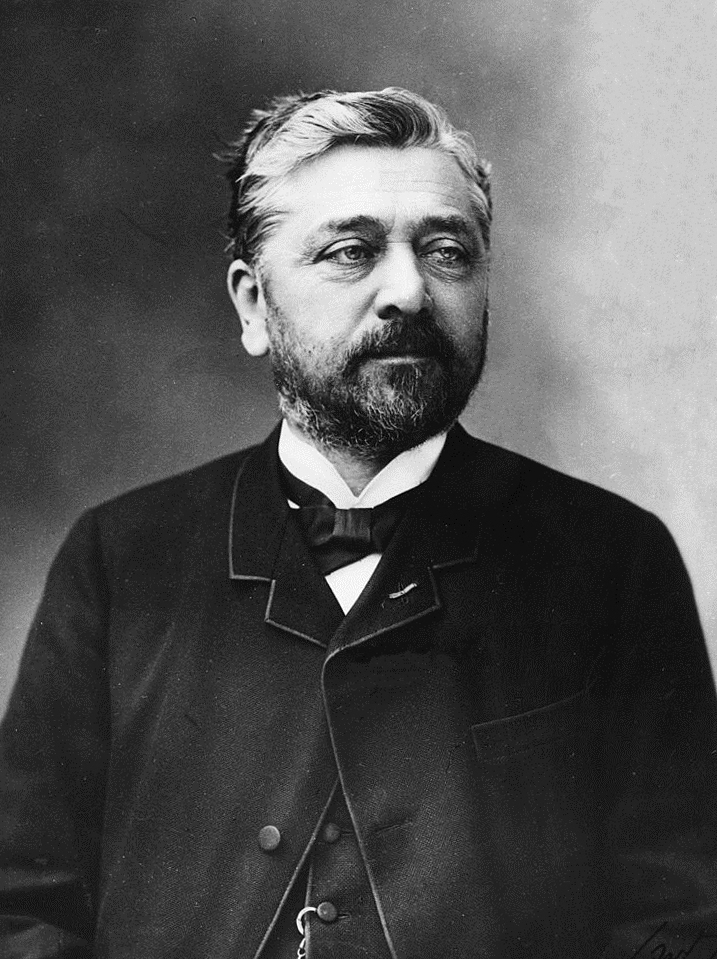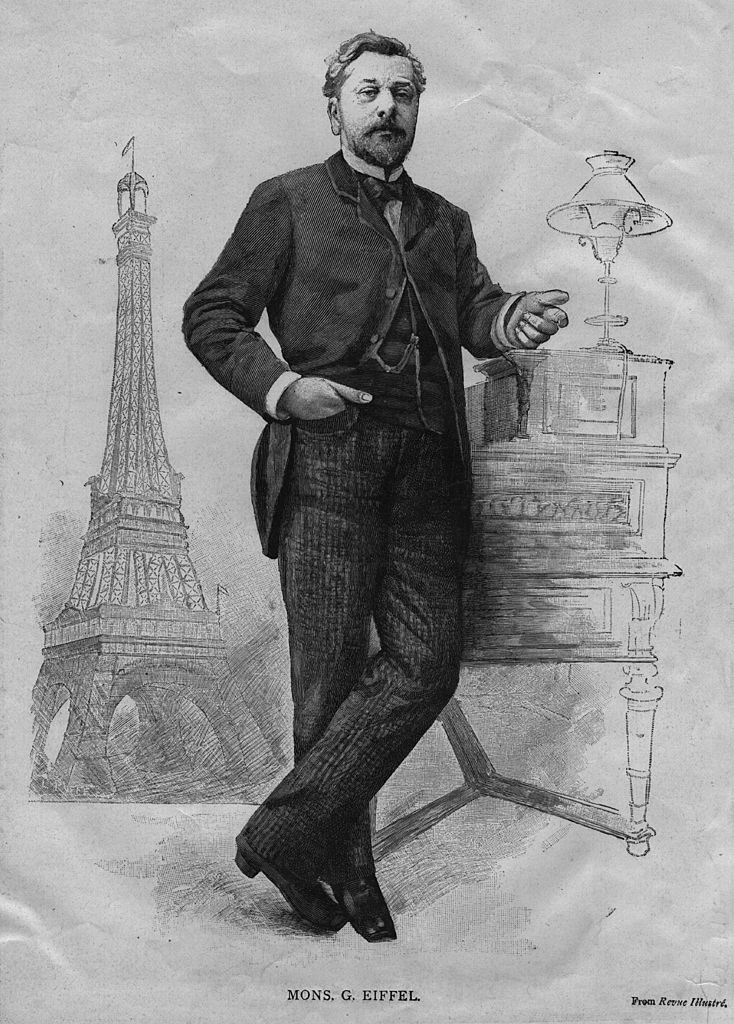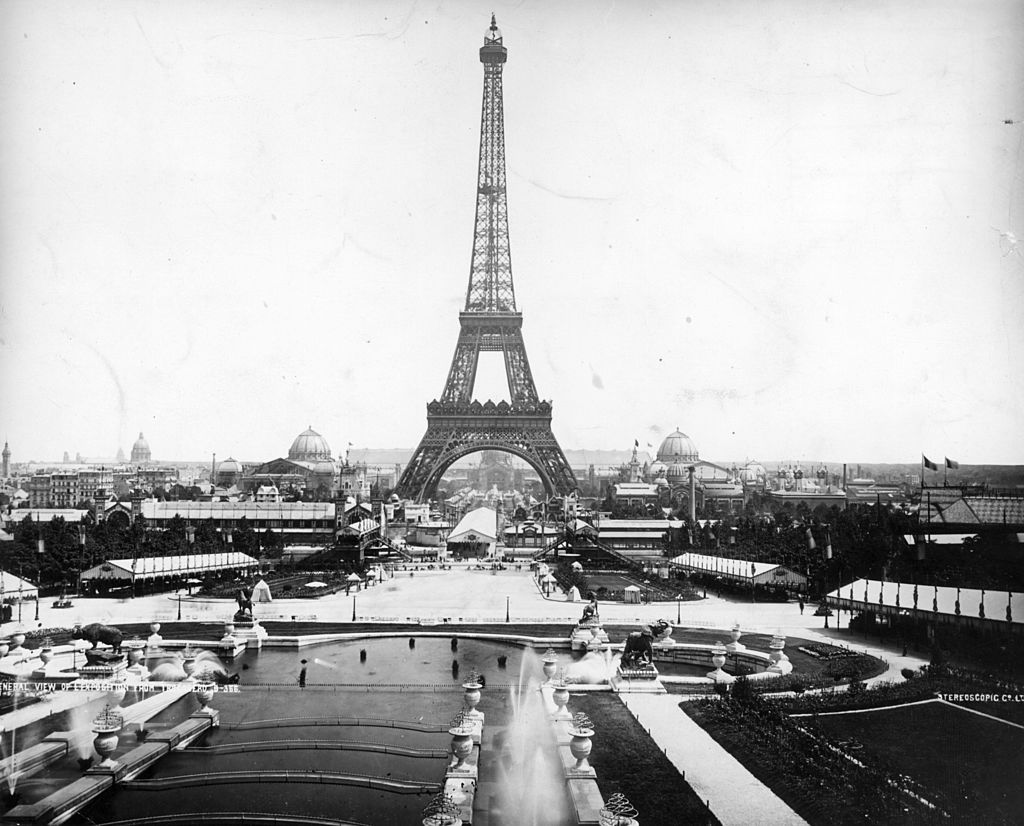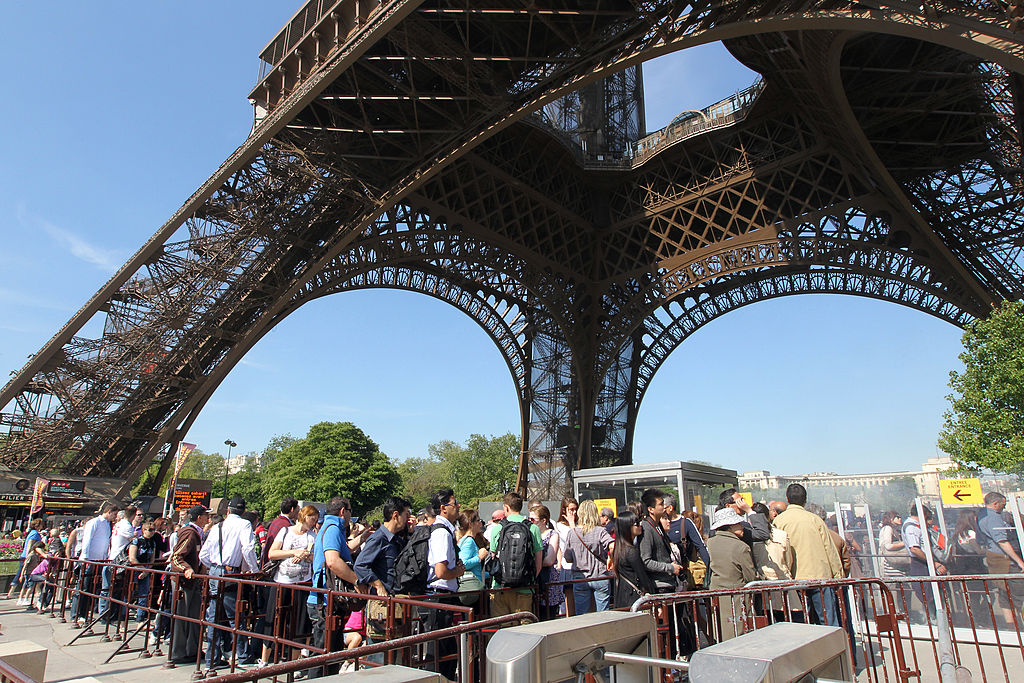
They once called the proposed 300-meter monument in the heart of Paris an “eyesore”; today, it’s an icon.
Gustave Eiffel’s proposal for a monumental centerpiece in France’s capital city was the source of great controversy for years. But the entrepreneur engineer’s tolerance of the critics, courage in the face of dissension, and persevering nature eventually saw his design elevated to the ranks of the greatest architectural achievements of the modern age.
At the 1889 Exposition Universelle, also the 100th anniversary of the French Revolution, a great competition to design a new Parisian landmark was launched in the Journal Officiel. Selected from among 107 proposals, it was the design of Gustave Eiffel, Maurice Koechlin, Emile Nouguier, and Stephen Sauvestre that was ultimately chosen.

The industrious group’s proposal was to “study the possibility of erecting an iron tower on the Champ-de-Mars with a square base, 125 meters across, and 300 meters tall.”
The construction of the winning entry initially faced massive public opposition. It was deemed an unnecessary eyesore, an ugly monument that would diminish the beauty of the city of Paris.
A petition titled “Artists Against the Eiffel Tower” was even sent to the Minister of Works and Commissioner for the Exposition Charles Alphand and published in Le Temps on Valentine’s Day, 1887.

“We, writers, painters, sculptors, architects, and passionate devotees of the hitherto untouched beauty of Paris, protest with all our strength, with all our indignation in the name of slighted French taste, against the erection of this useless and monstrous Eiffel Tower,” read the letter. It continued:
“To bring our arguments home, imagine for a moment a giddy, ridiculous tower dominating Paris like a gigantic black smokestack, crushing under its barbaric bulk Notre Dame, the Tour Saint-Jacques, the Louvre, the Dome of les Invalides, the Arc de Triomphe … all of our humiliated monuments will disappear in this ghastly dream.”“To Monsieur Eiffel the Engineer, the brave builder of so gigantic and original a specimen of modern Engineering from one who has the greatest respect and admiration for all Engineers, including the Great Engineer, the Bon Dieu.”“The responsibility of tolerance lies with those who have the wider vision.”– George Eliot“Your time is limited, so don’t waste it living someone else’s life. Don’t be trapped by dogma, which is living with the results of other people’s thinking. Don’t let the noise of others’ opinions drown out your own inner voice. And most importantly, have the courage to follow your heart and intuition.” – Steve Jobs“Life is not easy for any of us. But what of that? We must have perseverance and above all confidence in ourselves. We must believe that we are gifted for something and that this thing must be attained.”– Marie Curie
But Eiffel persevered with his proposal. The first construction started on Jan. 28, 1887, and the tower was completed on March 31, 1889. It was immediately regarded by millions as an extraordinary feat of technical engineering.

The Triumph of the Eiffel Tower
The Eiffel Tower was constructed in two years, two months, and five days. Today, the tower soars at a height of 1,063 feet and weighs a staggering 10,100 tons. It was opened to the public in 1889 and named after Gustave Eiffel himself.
In its inaugural year alone, the Eiffel Tower received nearly 2 million visitors.
According to its own official website, the Eiffel Tower was only intended to remain standing for 20 years but was redeemed by its incredible support of telecommunications. The iconic tower served as a military radio post in 1903 and transmitted the first public radio program in 1925.

The Eiffel Tower has since come to exemplify French ingenuity. The instantly recognizable monument has also served as inspiration for various works of art, literature, and film.
When the American inventor Thomas Edison visited the Eiffel Tower during the 1889 World’s Fair, he even signed the guestbook with the following message:
If Eiffel had allowed himself to be defeated by his critics, Paris would never have gained such an iconic landmark. Eiffel’s tolerance of the critics contributed to his eventual success, as did his courage and perseverance.
Here’s how the same three virtues can help anyone with an ambitious goal to achieve their dream.

Tolerance
Naturally, with great aspirations come great hardships. Tolerance, however, is what keeps the aspiring person afloat when choppy waters threaten to capsize a great idea. As the English novelist Mary Ann Evans, pen name “George Eliot,” once explained, for anyone who dreams big it is a necessary responsibility to practice tolerance of others, and their dreams, in turn.
Courage
It is prudent not to flee in the face of criticism. Only those who find themselves able to endure their harshest critics will be able to achieve the heights of greatness. Eiffel endured a huge amount of criticism, as did the business magnate Steve Jobs in his lifetime. Both men, however, achieved respect and global acclaim by remaining loyal to their principles and to their projects.
Perseverance
The greater the ambition, the greater the opposition. But equally, the higher the mountain, the more spectacular the view from its peak. As the Nobel Prize-winning physicist Marie Curie once attested, perseverance pays off; a belief in the desired destination allows for the journey to proceed, no matter how long or arduous it may be.
The Eiffel Tower has stood proudly for 110 years longer than it was originally designed for. Eiffel’s tolerance, courage, and perseverance laid the foundations, and the foundations are still holding strong.
Contributed by Louise Bevan
Pure Truth, Kindness and Beauty
It’s a great pleasure to present to you an inspiring story from the Award-winning painter Lauren Tilden. Her painting “Birds of the Air, Grass of the Field” has won the Bronze Award from the NTD International Figure Painting Competition in 2019.
“Working on that painting was a reminder to me not to worry. There is more to life than the issue you are facing at this moment.” – Lauren said.
While contemplating the value of human life, and how precious it is, the artist’s own young daughter became her stand-in, her persona in the painting. Please join us on this wonderful journey to visit Lauren in West Virginia.


